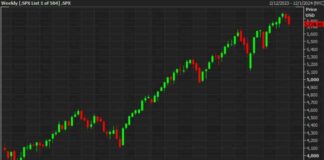Understanding the Impact of John Bogle on Investor Savings
John Bogle, the founder of the Vanguard Group and a trailblazer in the world of index funds, has left a lasting legacy that has revolutionized the way investors approach their portfolios. Bogle’s relentless efforts to drive down fees have not only saved investors billions of dollars but have also democratized investing for millions of people. Over the past five decades, Bogle’s advocacy for index funds has resulted in more than $1 trillion being retained by investors rather than lining the pockets of fund managers.
Index funds have become a popular choice for investors looking to gain exposure to the stock market as a whole, without the high costs associated with actively managed funds. By cutting out the middlemen and focusing on passive investing strategies, index funds have leveled the playing field for investors of all backgrounds. This shift towards low-cost, diversified investments has transformed the landscape of investing, making it more accessible and affordable for individuals seeking to grow their wealth over the long term.
The Rise of ETFs and the Pitfalls to Avoid
Exchange-traded funds (ETFs) have gained popularity in recent years as a convenient and cost-effective way for investors to gain exposure to a wide range of asset classes. However, not all ETFs are created equal, and investors need to be cautious when selecting these investment vehicles to avoid falling prey to unnecessary fees and subpar performance.
As the popularity of ETFs continues to grow, a new generation of so-called “rip-off ETFs” has emerged, promising high returns but delivering disappointing results. These ETFs often come with high expense ratios, excessive trading costs, and hidden fees that erode investor returns over time. It is essential for investors to conduct thorough research and due diligence before investing in any ETF to ensure that they are not being taken advantage of by unscrupulous fund managers.
Strategies for Avoiding Rip-Off ETFs and Maximizing Returns
To protect their hard-earned money and maximize their investment returns, investors should follow a few key strategies when selecting ETFs for their portfolios. First and foremost, investors should focus on low-cost ETFs that have transparent fee structures and track reputable indexes. By choosing ETFs with low expense ratios, investors can minimize the impact of fees on their overall returns and benefit from compounding growth over time.
Additionally, investors should pay attention to the liquidity of ETFs, as low trading volumes can result in wider bid-ask spreads and increased trading costs. It is essential to select ETFs that are traded on reputable exchanges and have sufficient trading volume to ensure efficient market pricing. By prioritizing liquidity and trading volume, investors can avoid getting stuck in illiquid ETFs that are difficult to sell at fair market prices.
Furthermore, investors should diversify their ETF holdings across different asset classes, sectors, and regions to reduce risk and optimize returns. Diversification is a fundamental principle of investing that helps spread risk across a range of investments, minimizing the impact of market volatility on overall portfolio performance. By allocating their assets across a mix of ETFs with varying risk profiles, investors can achieve a well-balanced and resilient portfolio that is positioned for long-term success.
In conclusion, while ETFs can be a valuable tool for investors seeking to build diversified portfolios at a low cost, it is essential to avoid rip-off ETFs that charge excessive fees and deliver subpar performance. By following the strategies outlined above and conducting thorough research before investing, investors can protect their wealth and achieve their financial goals with confidence. John Bogle’s legacy of driving down fees and empowering investors serves as a reminder of the importance of staying vigilant and informed in the ever-evolving landscape of investing.

















